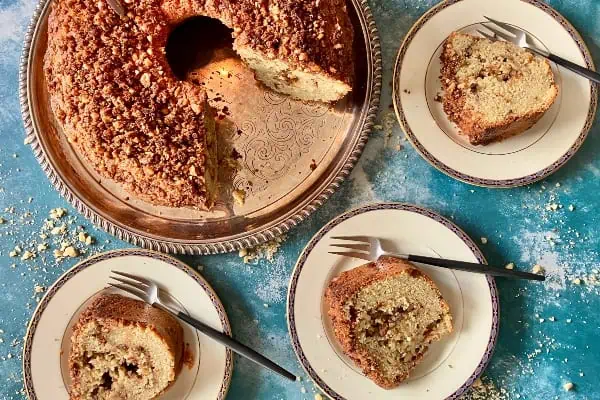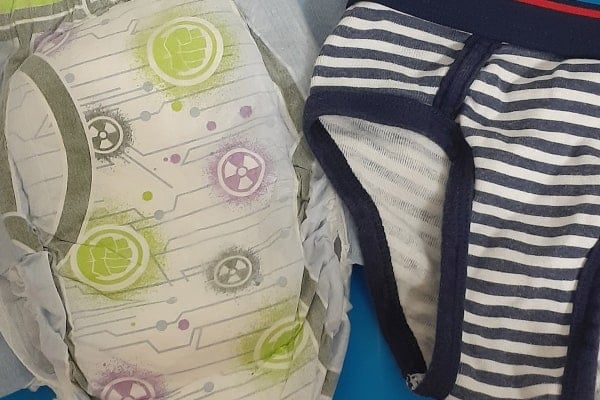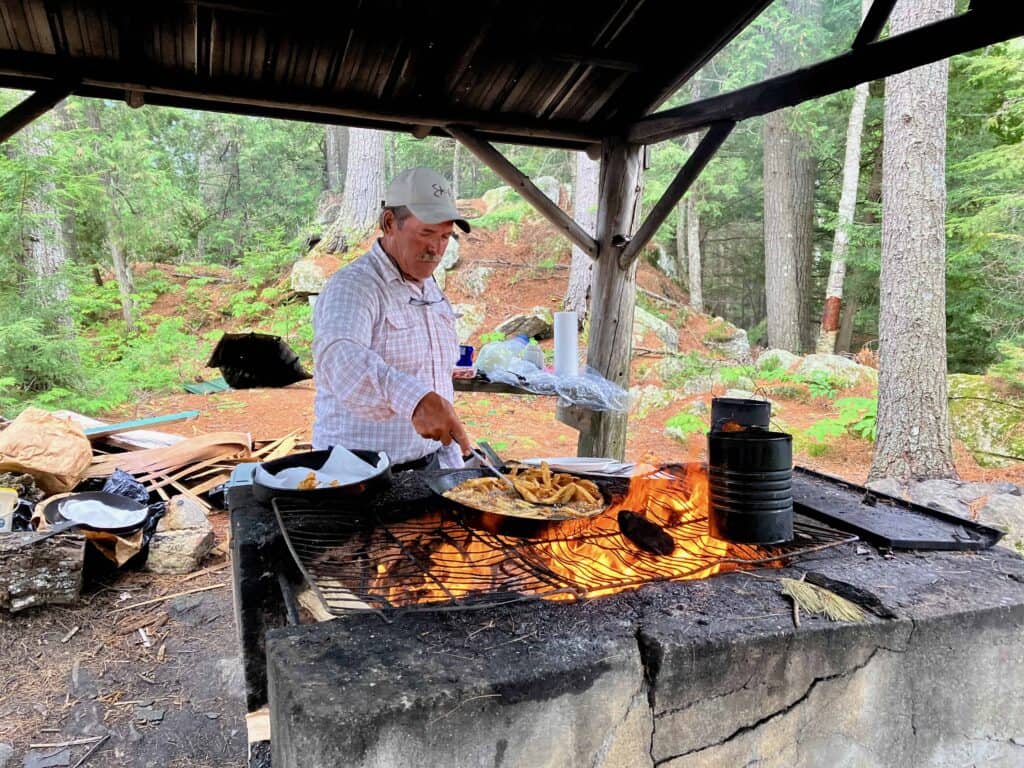
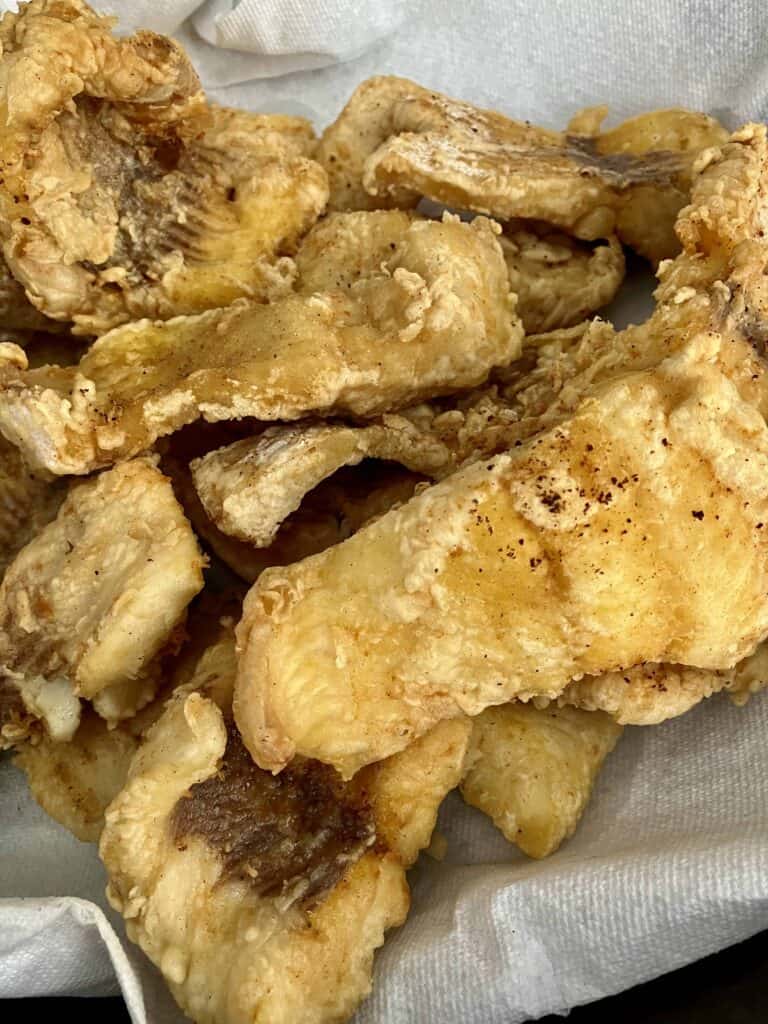
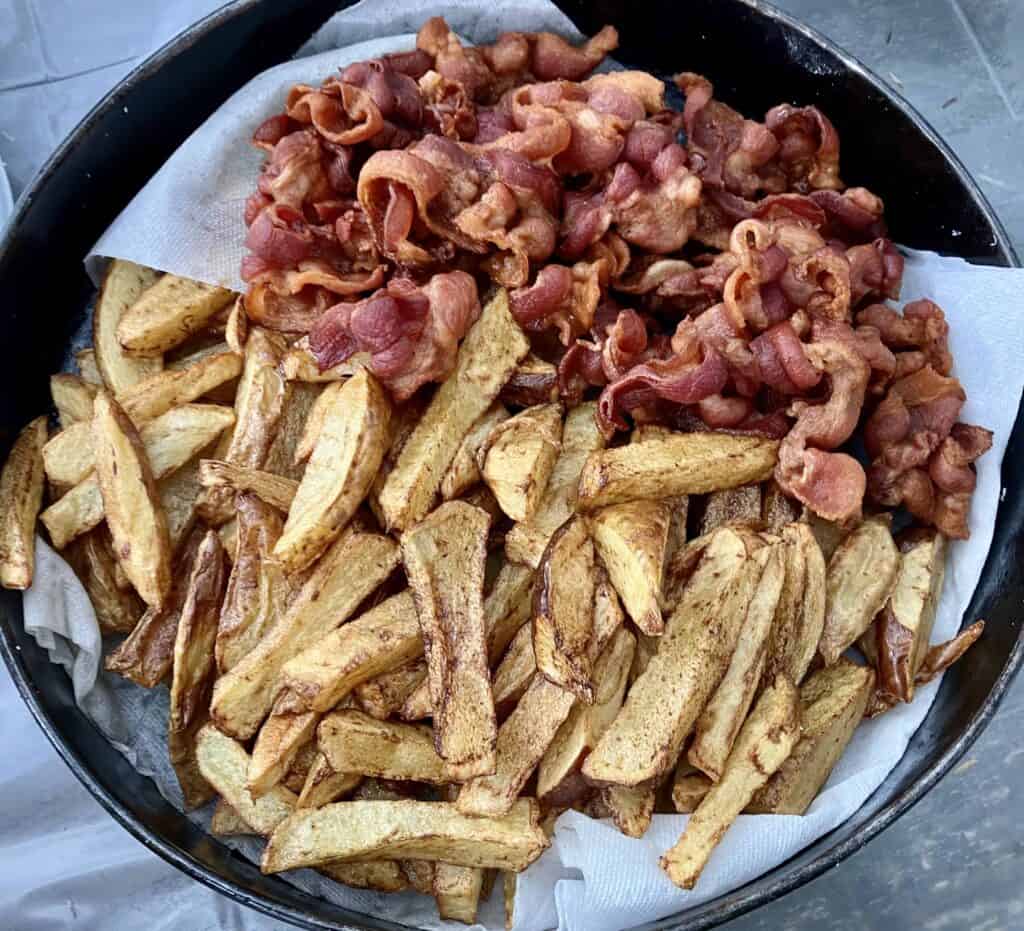
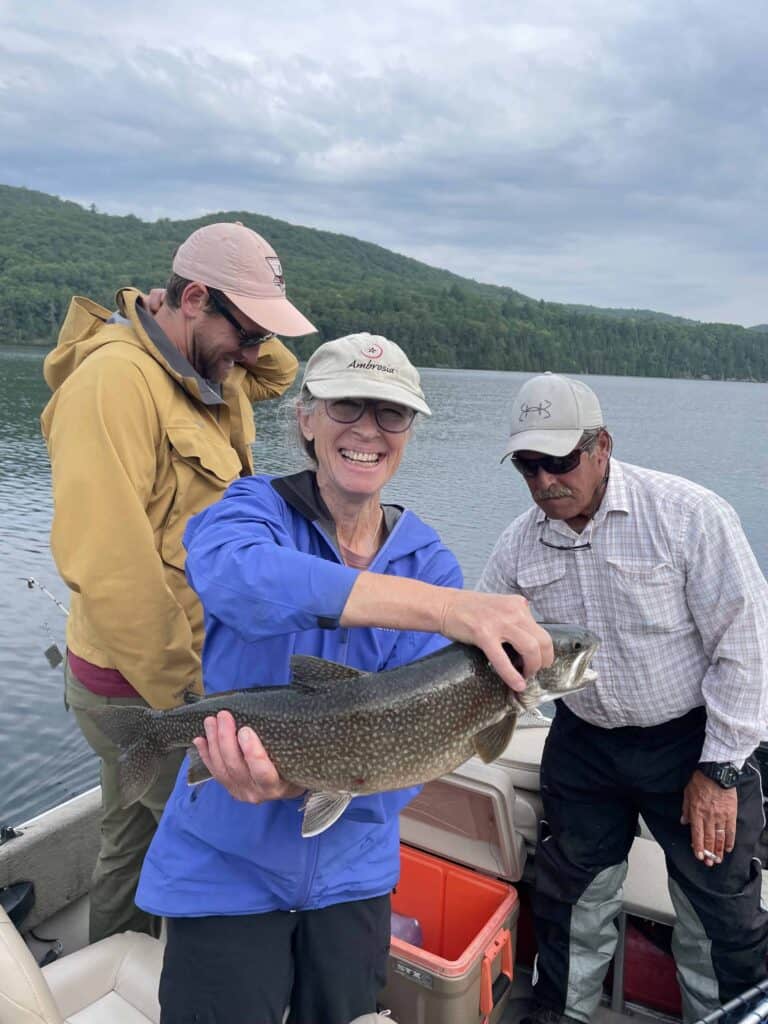
The tip of my rod jerked and dipped toward the dimpled grey water, and I glanced up at our guide. He shook his head. “No. You’re just scraping along the rock.” We were trolling slowly over a ridge submerged about 50 feet underwater in a wild lake near Gracefield, Quebec, where my brother and his family have been spending summers for the last 17 years. On this lake, guide Mario Lafrenière is a legend; he and his brother, the last of the old-time guides, who know the lake and all its secrets, and who never let you go home without fish.
For years, my brother has told tantalizing tales of fishing trips with Mario, followed by epic shore lunches. I have yearned to be part of one of these expeditions for as long as my brother has been on the lake.
He had greeted us the evening before, with thrilling news. “Just so you know, I have lined up Mario for tomorrow. We’ll fish for lake trout in the morning; bass in the afternoon. And yes … there will be a shore lunch.”
And now here we were, in a narrow reach of water between an island and the western shore, a favourite Lafrenière haunt where the lake trout lurk amongst the nooks and crannies of the submerged ridge. “Sometimes the fish are there but they don’t want to bite,” said Mario, pointing to the shadows swimming across his fish-finder screen. “Never mind, we will go somewhere else.”
We sped to another narrow strait, Mario cut the engine, switched to the trolling motor and gave us instructions: three of us let out our lines at 160, 165 and 170 feet. “This is where I catch the most fish in these days. They are 50 feet below,” he said. “Let’s see if we can wake them up.”
The long day of travel, the jet lag and the night of poor sleep melted away as we chugged up and down, up and down the strait, in an early-morning breeze that smelled of pine and lake and Mario’s cigarettes.
We watched our rods, and he did too, as he told us tale after tale—about the men who didn’t discover a wasps’ nest in their boat until they were in the middle of the lake, about the giant snapping turtles that hang around the fish-cleaning docks, and about the time he and his brother took six women out and each one caught their limit.
And then—a strike! My rod jerked and dipped. “Yes, that is a good fish. Now follow what I tell you,” said Mario. “Steady, steady, left hand on the rod, steady. Bring her up.” He grabbed the net and stood at the stern. “Stand up, move back in the boat. Slow now, slow. We don’t want to lose her.” The line of silver and copper lures (Mario calls them “the Christmas tree”) flashed under the surface, and then there was a deeper flash that came twisting and churning in their wake. Mario scooped the net down and brought up a beautiful nine-pound lake trout, the first catch of the day.
My brother and my niece’s husband cheered as Mario passed me the trout and I held it up for the crucial photo op. “Good! Now we have enough for shore lunch. But we will keep fishing. Everybody will catch a fish.”
Everybody caught a fish, in pretty much the same spot as I caught mine. My niece’s husband, who started the day saying he didn’t believe in lake trout (he’d never caught one), landed two.
Mario dropped us at my brother’s dock and raced off to prepare the site for our shore lunch. I jumped into water as soft as silk, for a quick swim. “Best to have your swim here,” said my niece. “The shore lunch spot is not really a swimming spot.”
We loaded six adults, a toddler and a baby into my brother’s boat, and skimmed over to a small bay nearby. As we motored towards the dock, I saw what my niece meant. The water was shallow, weedy, and looked like it harboured scary things.
Mario had already lit the fire and set a tablecloth over the picnic table on the rocky shore and, after more crucial photos, set to cleaning the fish with quick, deft strokes. As he threw the scraps into the water, “Look, look!” the toddler cried. Out from under the dock emerged a huge snapping turtle, its neck extended towards the fish. We watched in fascination as the prehistoric-looking beast opened its mouth and drew in the fish scraps in great gulping chunks.
“Yes, she is my friend,” said Mario. “I feed her often.”
He fileted two fish, cut them into serving-sized pieces and carried the lot up to the fire. I followed to watch. He filled a huge frying pan with oil an inch deep. “I used to use lard, but many women told me it wasn’t healthy. I don’t know if that’s true, but I changed anyway.”
He set the frying pan on the flames, to heat up, opened two cans of baked beans and placed them on the back of the grill and filled two coffee cans of water for cowboy coffee to go with the classic dessert: Grandma’s Butter Tarts.
First the potatoes, cut into wedges, went into the hot oil. “The potatoes always take the longest,” he said. Next, the bacon. “I cook everything deep-fried. Even the bacon. The best bacon. You’re gonna see.” After the bacon, it’s the fishes’ turn, first tossed in flour in a resealable baggie, then slid into the oil where they crisp and turn golden. Finally, the onion rings—unembellished with batter—sizzle and jump until they’re brown and crunchy. At last, the whole delicious lot is brought to the table and everyone dives in.
And that is a Mario Lafrenière shore lunch, accompanied by a glass of beer or white wine and a sip of champagne, brought by the shore-lunchers; to celebrate summer and fishing, and family and legends.


